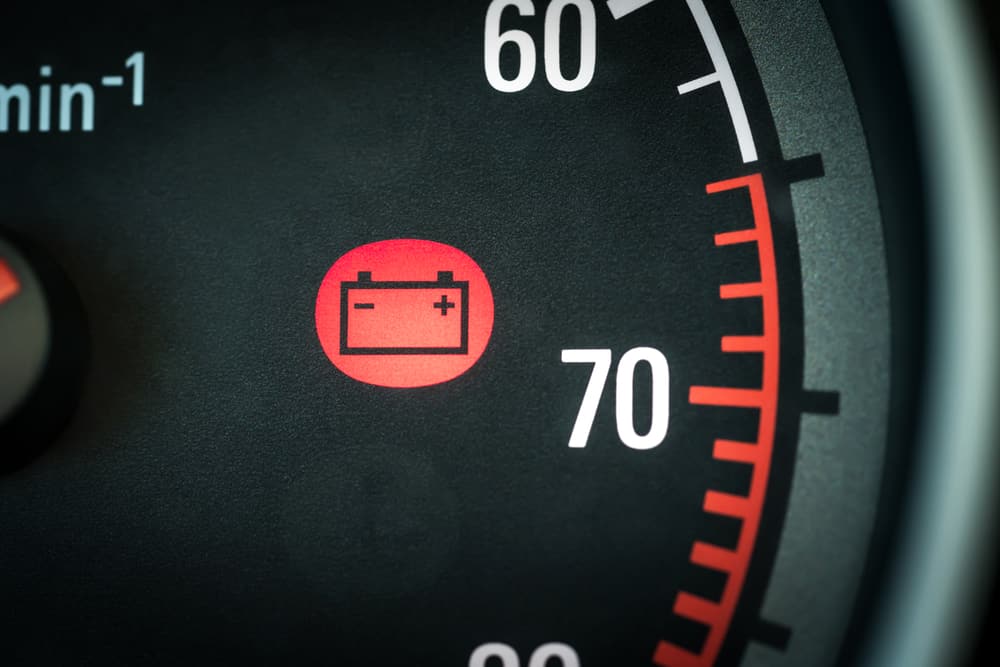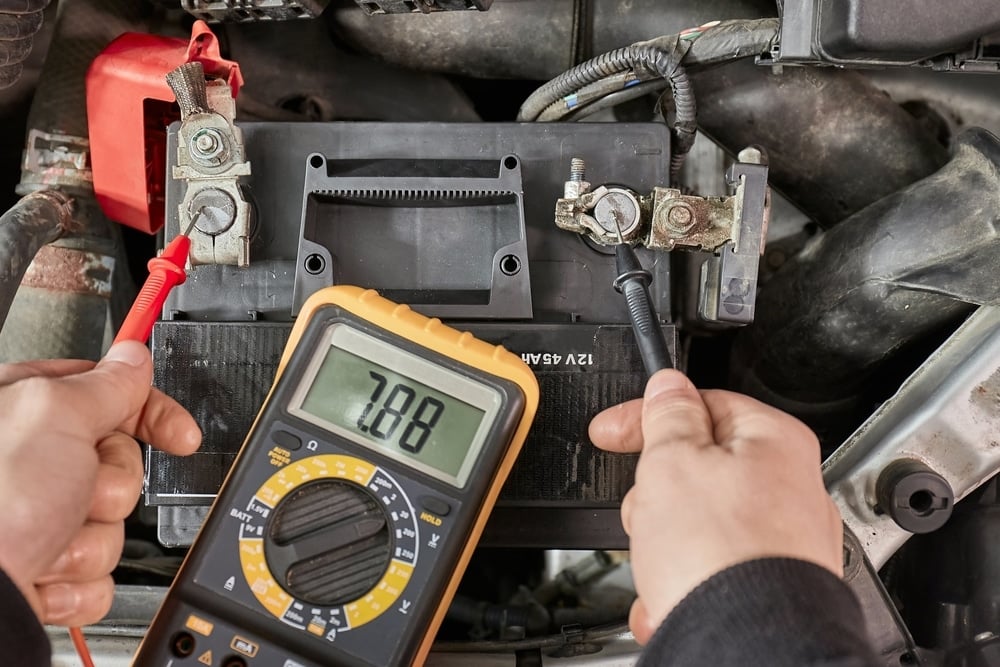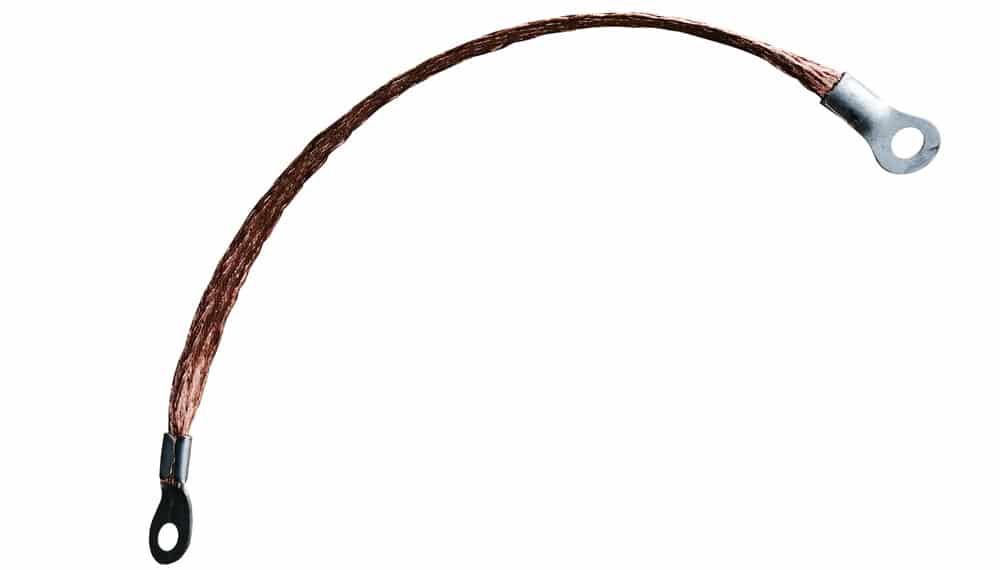If you are like most people, you haven’t heard of the ground strap, even though it has a very important job to perform. If you start to notice some of the symptoms of a bad ground strap, you may be more interested in learning about this vital part.
We’ve put together the top bad ground strap symptoms, along with some helpful tips to diagnose the problem. We also show you the location of this part, explain the function and discuss the replacement cost before answering your top questions.
Symptoms Of A Bad Ground Strap
When the ground strap is bad, you’ll notice flickering headlights or dashboard warning lights. It can also cause the battery not to charge, low battery voltage and trouble starting the car. You may also notice strange electrical system malfunctions that don’t seem to make sense.
Some of these symptoms can be caused by other problems too, but let’s take a closer look.
1. Flickering Headlights

As with any charging system malfunction, you can deal with flickering headlights. When the ground strap is damaged or isn’t connected properly, the electrical circuit encounters more resistance while delivering power to the headlights. The result is a flickering sensation or dimming over time.
If you only notice the flickering once, it could have been that the ground strap became loose but rested in a good position. Most likely, the problem will continue and you will need to tighten the ground strap or replace it.
2. Dashboard Warning Lights

With so many different dashboard warning lights, it can be difficult trying to figure out what the vehicle is trying to tell you. With this problem, you may see the battery warning light on the dashboard, indicating that the battery is getting low and can’t charge properly.
Yet, a bad ground strap isn’t the only cause of this problem. It can also be due to bad wiring or a faulty alternator. If you need to get the car down the road a little further when this light comes on, turn off all electrical equipment, such as the radio and air conditioner. This step helps you preserve the battery for a little longer.
3. Battery Not Charging Properly
As just discussed, the battery can stop charging when the ground strap is bad. The car needs to have a good ground to charge the battery.
Again, a dead car battery isn’t just due to the ground strap. It could legitimately be time to replace it or you may have a failing alternator. For this reason, it’s important to perform a complete diagnosis before replacing anything.
4. Low Battery Voltage

If your vehicle’s electrical system doesn’t seem to have as much power as normal, there could be something wrong with the ground strap. A digital multimeter can help you discern the amount of voltage coming out of the battery terminals.
This reading should be around 12.6 volts without the car running. If it’s lower than that, you may have a dying battery or a grounding problem.
5. Problems Starting Your Car
There are so many reasons why your car won’t start, but you should never overlook the possibility of a bad ground connection. If the ground is to blame, you will hear tapping noises when trying to start the car.
This noise comes from the starter solenoid because it opens and closes repeatedly. Without a proper ground connection, the starter can’t get the right voltage, but this also occurs if you have a dead battery.
6. Various Strange Electric Problems
When there’s a bad ground, you may notice some electrical system difficulties, especially when it’s under an immense load. As an example, you may notice things get glitchy when you have your air conditioning running and your aftermarket stereo with a subwoofer.
If you try to use two functions at once, such as the power windows and high beams, you may notice one doesn’t get the power it needs. Any strange electrical problems should be examined as a possible bad ground connection.
What’s The Function Of A Ground Strap?

The vehicle’s ground cable connects the negative battery terminal to the chassis. The car’s ground strap provides the grounding connection that runs from the engine to the body of the car. With the engine connected to these areas, there’s an alternate path for electricity created.
For safety purposes, most electrical components need to be grounded. By grounding the connection, a complete circuit is created where electricity can travel through a set path. Electricity freely flows from the positive terminal of the battery to the electrical components where it’s needed. After that, it travels through the ground connection.
If there’s a short circuit or power surge, the ground connection provides protection from damage. It gets dispersed in the ground connection. Electrical devices that rely on a ground connection include these:
- AC compressor
- Radiator fans
- Stereo system
- Ignition system
- Alternator
You can learn more about your car’s ground connections by checking the available schematic in your service manual.
Where Is The Ground Strap Located?
The ground cable runs from the negative bettery terminal to the chassis. It looks like a battery cable. Because it is prone to corrosion, the connection can sometimes be compromised.
The ground strap runs from the engine to the chassis. While it’s called a strap, it looks more like steel that’s braided together to create a band.
Over time, this band of steel can become frayed and damaged. It’s subject to weather conditions, vibration, heat and hot oil that leaks from the engine. If the strands of the band deteriorate too much, they will break, reducing the efficiency of the ground strap.
How Do You Test A Ground Strap?
Your first test should be a visual inspection of the ground strap. Look for the plain black cable. It is going to be connected to the negative terminal of the battery and the car chassis. Check the entire cable for damage. Even a small amount can cause electrical interference.
Your car has several ground connections, including the one that runs to the engine block. Make sure you locate all of them to check for damage.
If you don’t see physical damage, you can test the connection with a multimeter. The digital multimeter doesn’t cost a lot and is handy for diagnostics such as these.
- Park your car in a dry location, such as a garage. The area must be completely dry.
- Take off any jewelry since you will be working with electricity.
- Set your multimeter to 20 V Direct Current (DC).
- Touch the red probe to the (red) positive battery terminal and the black probe to the (black) negative battery terminal. This reading should be around 12.6 volts.
- Put the black probe on the ground connection. It should continue to read 12.6 volts. Anything far below that indicates a bad ground strap.
- Connect your black probe to a part of the engine block that’s metal. This is testing the ground connection to the engine. It should match the specifications in your service manual. If it doesn’t, you need to replace or reconnect the cable.
If your tests reveal nothing, you may want to check for a blown fuse, especially if you are unable to start the car. If your symptoms are flickering headlights, sporadic electrical problems and issues charging the battery, you may also have a dying alternator.
How Much Does It Cost To Replace A Ground Strap?
It’s not expensive to replace a ground cable. You may spend $150 to $250 to have the ground cable replaced by a professional. The part only costs about $20 to $40, while the labor may add another $130 to $210.
On some vehicles, it’s difficult to reach the ground cable, which would add to more installation time. However, you can probably figure out how to do it yourself if you have some basic tools and a high-quality service manual. These manuals give you the schematics and offer step-by-step instructions.
If you aren’t sure about the procedure, pay to have a professional handle it instead. As mechanics, we would rather drivers reach out for help than do something that could harm the electrical system. You could end up with a much higher repair bill if you fry something electronic because you aren’t confident in the procedures.
Why is a ground strap necessary?
The ground cable is the negative battery cable that completes a circuit from the battery to the chassis. It’s needed to prevent electrical overloads or shorts from harming the valuable car components. Yet, when it’s not connected properly or is worn, it can lead to electrical malfunctions.
What is the difference between a ground wire and a ground strap?
The ground strap is usually a braided metal band that connects the engine to the car’s chassis. In comparison, the ground wire or cable is used to connect the negative battery terminal to the chassis of the vehicle. Other electronic equipment may also use some form of ground wire.
Will a car start without a ground strap?
No, the starter motor won’t receive the voltage it needs to start the car without the ground cable or strap. Even if you could drive the car for a short time, the battery would stop charging, leaving you stranded anyway. That’s why it’s a good idea to have the ground strap replaced at the first sign of trouble.
How do you know if the grounding is correct?
You can use a digital multimeter to get the readings off of the battery terminals and ground to see if it has been grounded correctly. Compare the readings with the specifications in your service manual to ensure everything is run properly. If the ground is bad, replace it or tighten the connection to avoid problems.
How do you install ground straps?
Remove the old ground straps and connect the heavy-duty cable to the negative battery terminal. The other end connects to the metal on the engine block or chassis. Make sure both connections are tight and clean. Make sure there’s enough length that the ground won’t be pulled apart under torque.
With a bad ground strap or a loose connection, a lot of problems can occur. It’s best to repair the connection at the first sign of problems, so you aren’t left stranded somewhere. With some basic mechanical expertise, you could replace the broken cable yourself.
However, some cars have a difficult configuration, making it harder to reach the strap and its grounding points. In this case, you may be better off paying a professional to handle the replacement for you, unless you have some extra time on your hands and a good service manual to reference.
Categories: Car Battery, Electric

















